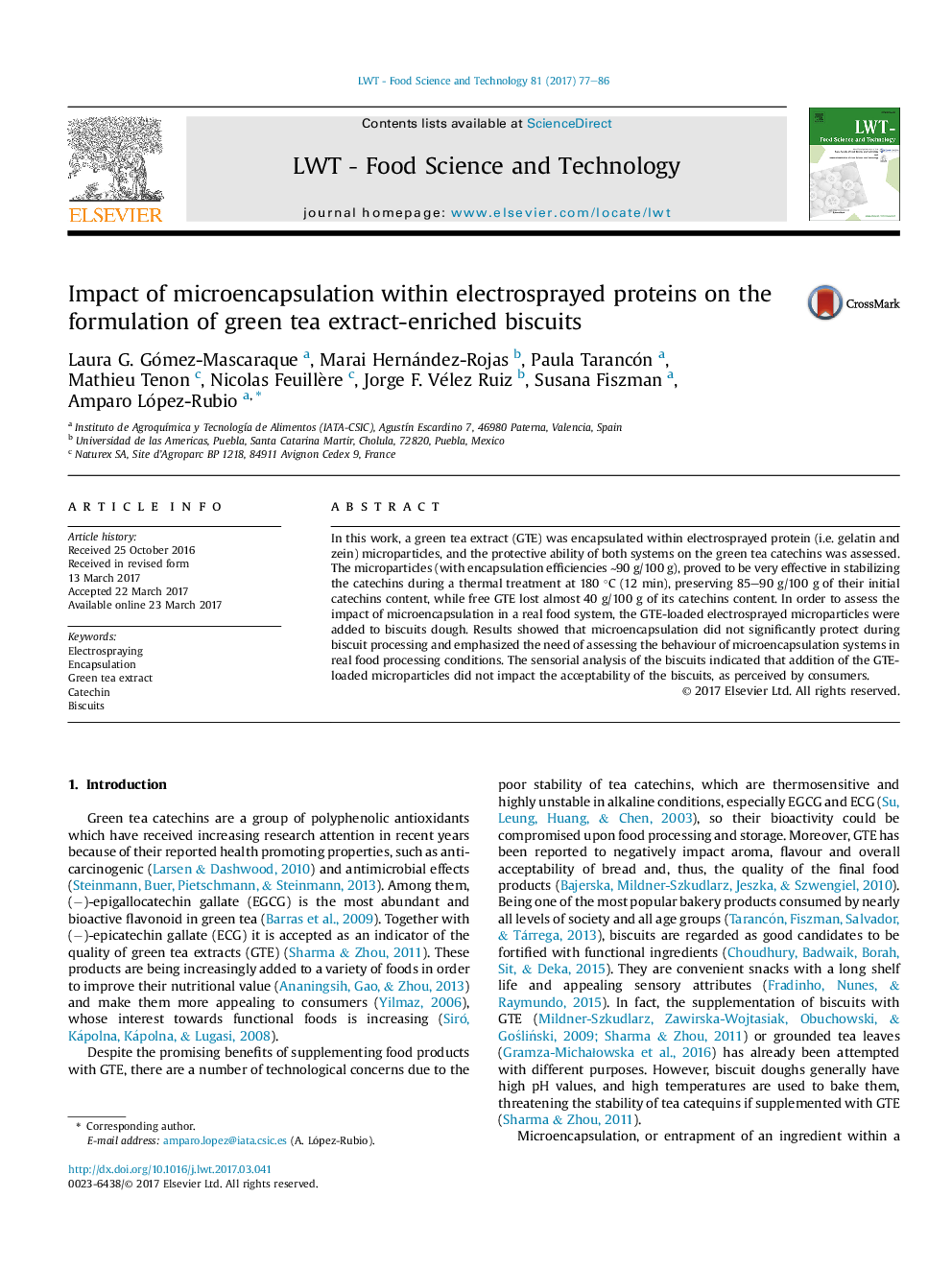| Article ID | Journal | Published Year | Pages | File Type |
|---|---|---|---|---|
| 5768476 | LWT - Food Science and Technology | 2017 | 10 Pages |
â¢Catechin-containing protein microcapsules were developed through electrospraying.â¢A great thermal protection ability of the microcapsules was observed.â¢Microencapsulation did not improve antioxidant capacity in biscuit doughs.â¢Addition of loaded microcapsules did not affect sensorial properties of biscuits.
In this work, a green tea extract (GTE) was encapsulated within electrosprayed protein (i.e. gelatin and zein) microparticles, and the protective ability of both systems on the green tea catechins was assessed. The microparticles (with encapsulation efficiencies â¼90 g/100 g), proved to be very effective in stabilizing the catechins during a thermal treatment at 180 °C (12 min), preserving 85-90 g/100 g of their initial catechins content, while free GTE lost almost 40 g/100 g of its catechins content. In order to assess the impact of microencapsulation in a real food system, the GTE-loaded electrosprayed microparticles were added to biscuits dough. Results showed that microencapsulation did not significantly protect during biscuit processing and emphasized the need of assessing the behaviour of microencapsulation systems in real food processing conditions. The sensorial analysis of the biscuits indicated that addition of the GTE-loaded microparticles did not impact the acceptability of the biscuits, as perceived by consumers.
